How an 11th-century monastery reclaimed artifacts from the US — and discovered a hoard of treasures in the process
Hidden under years of dirt and grime in storage rooms, hundreds of precious religious objects have been rediscovered at a monastery in Nepal’s capital, Kathmandu. Gilded crowns worn by Buddhist priests, halos that once adorned statues of deities and mini stupas gifted by the local community are among the long-lost antiques now on display at Itumbaha, one of the city’s oldest “viharas,” an early form of a Buddhist monastery.
The story of the objects’ rediscovery stretches far beyond the warren of shrines, courtyards and ornately decorated columns that have stood on the site since the 11th century. Until earlier this year, two of the sculptures were more than 7,500 miles away in New York’s Rubin Museum of Art, which specializes in Himalayan art, and the Metropolitan Museum of Art.
Like many of Nepal’s religious sites, Itumbaha is no stranger to the theft and looting of its relics and architecture. Nepalese authorities estimate that up to 80% of the country’s religious artifacts have been stolen and sold on the black market since the 1980s. As museums digitize their collections and make them publicly available online, more claims are being made around the world for pillaged objects to be returned.
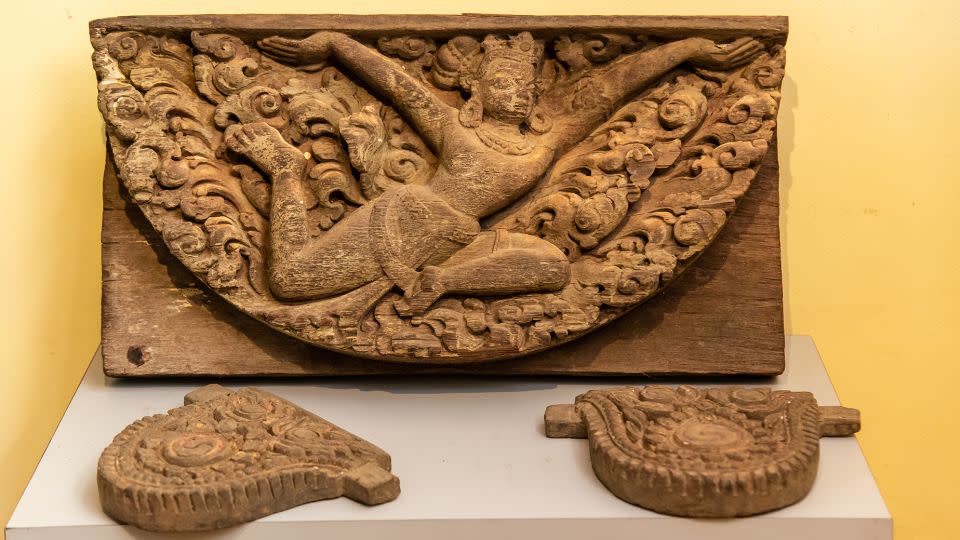
Amid growing calls for Western museums to repatriate stolen cultural heritage, the Met announced in 2022 that it was returning a 13th-century wooden temple carving of a “salabhinka,” a semi-divine spirit, to Itumbaha. Earlier that year, the Rubin repatriated two Nepalese wooden carvings — one originating from the monastery, and the other from a nearby temple complex — that its researchers believe to have been looted.
But for Itumbaha’s leaders, the process of recovering these objects was not only about addressing historical injustice. It sparked a dialogue that brought to fruition a long-time dream: a new museum, in the monastery grounds, to research and catalog its more than 500 artifacts. Opened in late July, it currently displays some 150 of the works, spanning six centuries, and tells the history of antiquities looting in Nepal. The rest of the objects remain in storage.
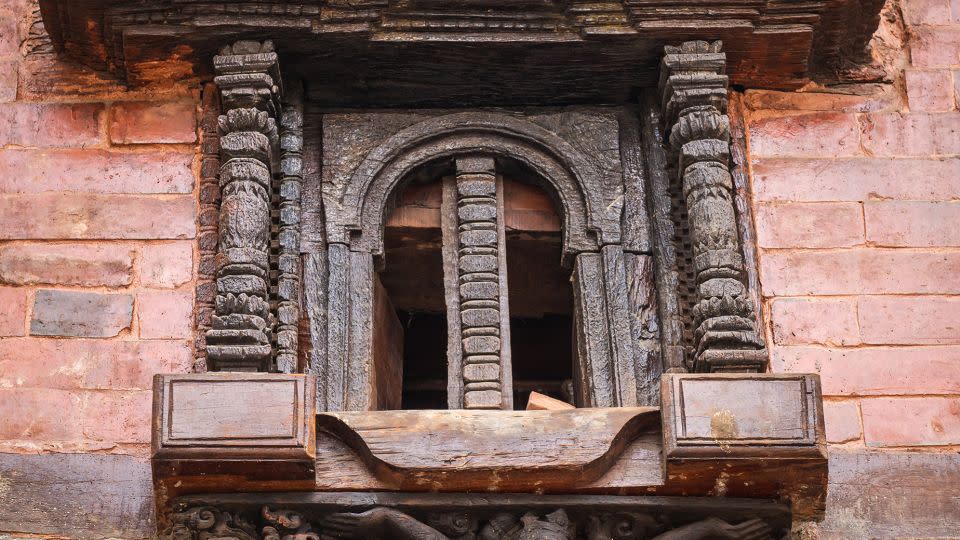
Paper trails and photographs
It has long been known that Itumbaha harbored priceless artifacts, but locating and inventorying them was never a priority for the cash-strapped monastery. When the World Monument Fund, a private non-profit dedicated to preserving cultural heritage, began reconstruction work on the site almost two decades ago, members of the vihara came across many objects “buried in layers of dust and dirt and mud and sand,” said Swosti Rajbhandari Kayastha, a museologist and Lumbini Buddhist University lecturer who was tasked with putting together the museum.
Some of the items on display were already known about — like a gold crown worn by the vihara’s founder, Keshchandra, and a ceremonial golden door through which a goddess is said to have passed a sacred sword to Nepali kings at their coronations, providing them with the strength to rule. But others, like the aforementioned crowns, halos and stupas, were surprise finds, as the bulk of objects languished in storerooms covered in thick layers of dust, all but forgotten.
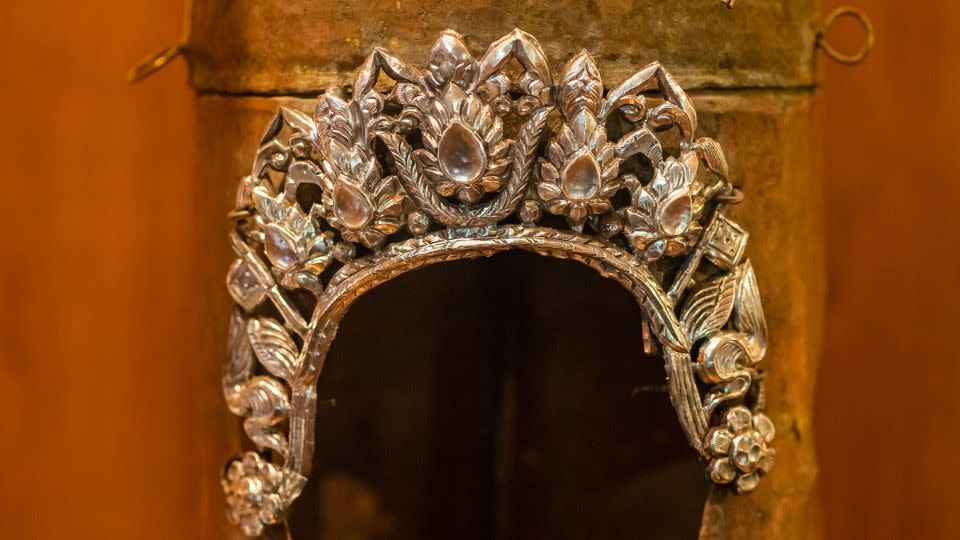
Records are crucial to protecting and preserving cultural heritage. Without documentation and photographs placing them on site, the looted items found in US museums may never have been returned to Itumbaha. So, after completing its own research, the Rubin offered funding and expertise — at the monastic leaders’ request — to help the vihara establish its own museum.
“It is our hope that through this collaboration we can create further awareness around the cultural importance of historic collections held in religious institutions like our own and the need to document and protect them,” said Pragya Ratna Shakya, president of the Ithum Conservation Society, which takes care of the vihara, in a statement announcing its partnership with the Rubin.
In a phone interview with CNN, executive director of the Rubin Museum, Jorrit Britschgi, said: “It’s so important to prevent future thefts to be able to say: ‘Hey listen, this was in the house collection as of (this) date.’” The Rubin is currently doubling down on efforts to identify other items in its collection with questionable provenance, he added.
Thievery in the Himalayas
Roshan Mishra, a founding member of the not-for-profit organization Nepal Heritage Recovery Campaign (NHRC), said many relics were looted and removed from Nepal after the country began welcoming overseas visitors (Nepal was a hermetic kingdom, closed to foreigners, until the fall of the Rana dynasty in 1951) and the global art market began valuing its elaborate carvings and statues.
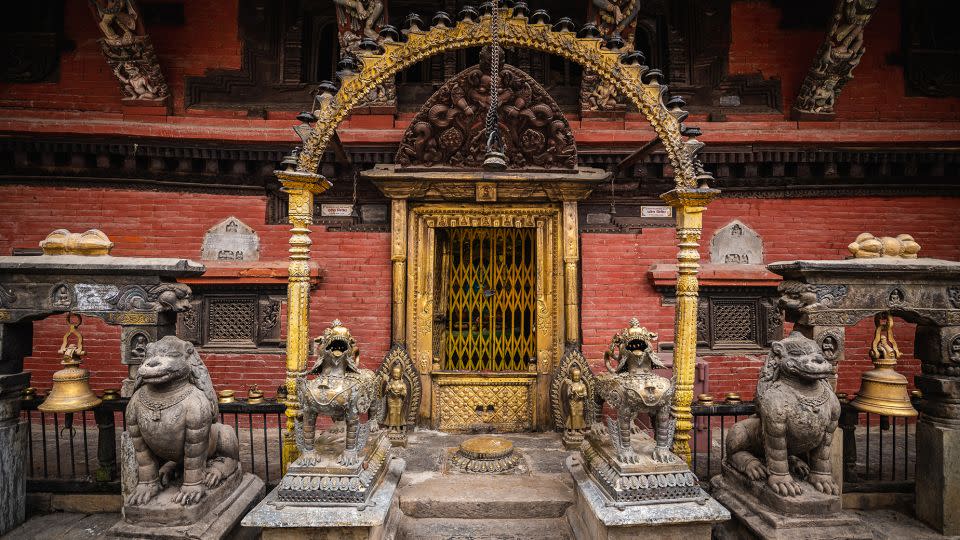
“In the ‘60s and ‘70s, Nepal was just open. Nobody was even thinking… that (representations of) gods and goddesses would be stolen one day,” said Mishra. “(They were just) part of the culture, part of the community; they were almost like trees, bushes, animals and us.”
In the decades that followed, heritage protection took a backseat amid political upheaval and a protracted civil war. But now, with the return of relative stability since the war’s end in 2006, Nepalis are taking a closer look at what items went missing.
Organizations like the NHRC have been at the forefront of efforts to identify objects taken from religious sites across the country. The non-profit has helped identify (often based on photos and tips posted to an anonymously run Facebook page, Lost Arts of Nepal) dozens of objects it believes belong to the country, a number of which have now been recovered.
For the NHRC, repatriating objects is not just about rebuilding Nepal’s collections — it’s returning the gods to the people and restoring rituals that were once part of everyday life. Many ceremonies and festivals centered around certain relics stopped when they were stolen, putting an end to age-old traditions, Mishra said.
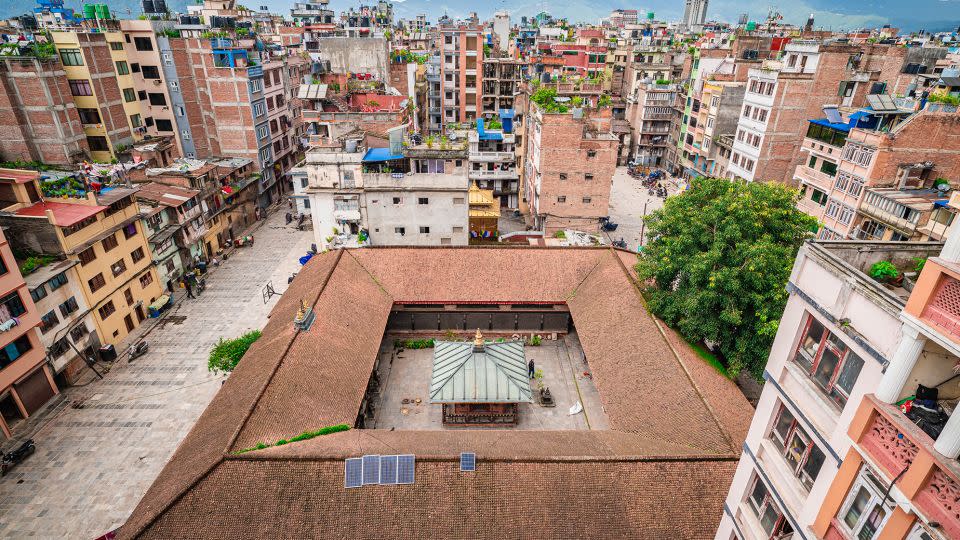
There’s an element of urgency for the group now, as many of the missing objects were taken several decades ago. “It is very likely that the next generation of people would easily forget the rituals,” said Mishra.
By the people, for the people
In this spirit, Itumbaha’s new museum hopes to show how religious artifacts can be presented as living heritage. As a community space where religious rites and rituals take place every day, it’s an “open” museum in which historical objects are sometimes used by the vihara’s members. Bells are rung in ceremonies, for example, while at a festival in August relics were taken out into the courtyards, where locals were allowed to touch and examine them. It’s a departure from most of the world’s museums, where valuable objects are placed in temperature- and humidity-controlled glass cases under high security.
While this may lead to wear and tear, or even the eventual destruction of precious objects, the museum’s approach reflects the idea that artifacts are part of life — and can even have lives of their own. “We need to allow these objects to live and die with dignity,” Mishra said. “Within the monastery space, or a temple space, they’re constantly touched, right? You pray, you do the ritual around them… you don’t need to think about conservation and preservation when they perform a living tradition.”
“It’s entirely up to that community what they want to do with these objects, and most of the time they’re (put) back into the temple and shrines, and they will be worshipped,” he added.
The artifact returned by the Met and the Rubin have now been restored to their original spots and are once again part of Itumbaha’s architecture.
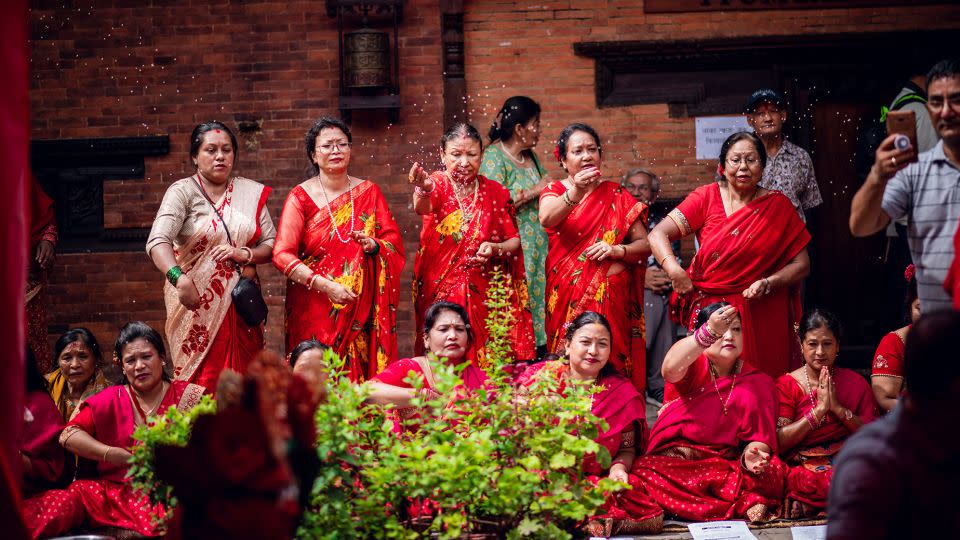
The project brought together people from across generations to decipher what some of the rediscovered items were used for, according to Kayastha. It unearthed memories and revived interest in the history and traditions of Itumbaha and its Newar Buddhist devotees — something that had previously proven a challenge, she added.
“For many of the objects, even the community has lost their knowledge (of their functions),” Kayastha said. “They had to make four or five different calls to different people to ask: ‘What is this thing called? What was it used for?’”
The museum, she said, will always be a work in progress — an open research center to share knowledge and revive lost knowledge. “Nothing is final, nothing is the whole truth, there’s more to be appended over time,” she said.
‘Give back our gods’
Not everyone was happy with the Rubin’s role in financing the project. Nepali heritage activists protested the Itumbaha museum’s opening in July, accusing the Rubin of using the collaboration to launder its public image and deflect calls to scrutinize the provenance of other items in its collection.
They held placards reading: “Say No to Cultural Invasion,” “Rubin Stop Your Whitewashing” and “Rubin Give Our Gods Back.”
In an open letter to the Rubin’s director, NHRC chairperson Riddhi Baba Pradhan welcomed the collaboration, but warned that the exhibition “cannot be a way to generate misplaced goodwill nor to divert attention from the responsibility of foreign collectors and museums on the matter of stolen heritage items from Kathmandu Valley and Nepal as a whole.”
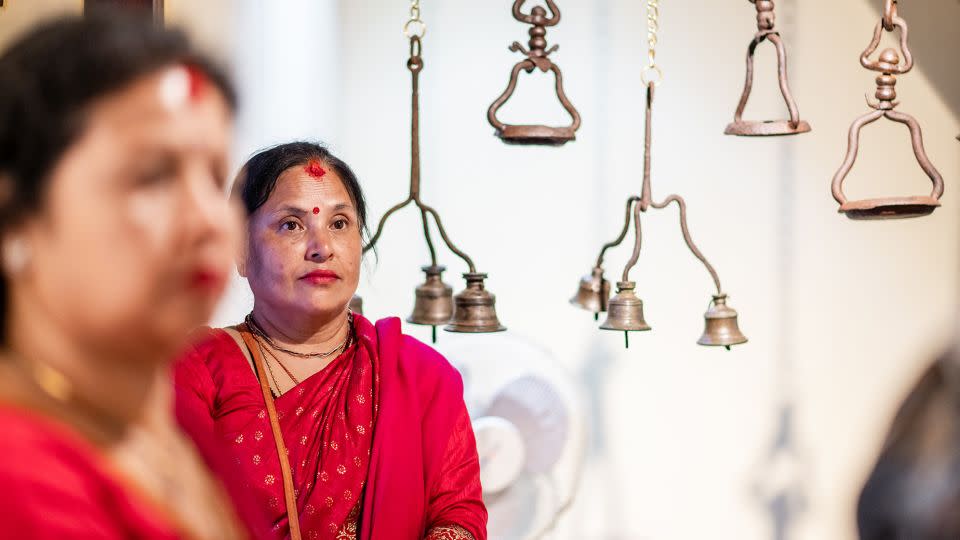
Pradhan also called on the Rubin to help quash the market for stolen cultural objects, which she said “requires committed curators to investigate, report and repatriate.”
Fellow NHRC member Roshan Mishra meanwhile suggested that Western museums commission local artisans in Nepal, and elsewhere, to create authentic replicas that could be displayed in place of looted objects. Doing so would “clean” their collections while supporting living artists and cultures, he added. He also called for more museums to set up processes to identify and repatriate objects.
“We don’t have to name and shame institutions (with potentially stolen items in their collections) on social media,” said Mishra, adding: “We can have a conversation… we can figure out how to make these things happen.”
For more CNN news and newsletters create an account at CNN.com

